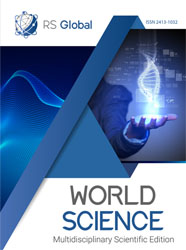РОЛЬ МАТЕРІАЛУ В ФОРМАЛЬНОМУ ТА ОБРАЗНОМУ ВИРІШЕННІ СИМПОЗІУМНОЇ СКУЛЬПТУРИ
Abstract
On the example of creative work of the International Transcarpathian sculpture symposia, the article analyzes the relationship between the structure of the artistic image, the selection of forms and the material of the symposium sculpture. The conclusions about the influence of sculptural material on the disclosure of an image that uses its natural properties as signs of its own content (pattern, texture, hue, etc.) are made. It is proved that the material does not play a primary role in form and image projection, but it often directs the artist's opinion in a certain direction of form layout and embodiment of artistic image. Emphasis is placed on the practice of sculpture symposia and the associated technique of direct carving in stone, which have directly influenced the process of updating the image and plastic consciousness of Ukrainian artists since the second half of the 1980s.
References
Альошкіна, Д. (2007). Людина-легенда, «мистець-симпозіум», або геній з Пирятина. Образотворче мистецтво, 3, 80–82.
Іванець, Н. (1988). «Земля квітує». Образотворче мистецтво, 1, 32.
Лисенко, Л. (1993). У пошуках загублених зв’язків. Образотворче мистецтво, 2, 22–25.
Протас, М. А.(2012). Скульптурные симпозиумы Украины. Стилистико-парадигмальная эволюция. Киев: Феникс.
Светлов, И. (1979). Симпозиум скульптуры на открытом воздухе. Творчество, 3, 10–16.
Собкович, О. (2016). Сучасна скульптура Закарпаття. Образотворче мистецтво, 2, 86–89.
Zöngür C. (2017). International Sculpture Symposiums and Impressions. Sociology and Anthropology, 5(5), 420–431. Retrieved from: https://www.researchgate.net/publication/317311786. DOI: 10.13189/sa.2017.050506
Views:
310
Downloads:
217
Copyright (c) 2020 The author

This work is licensed under a Creative Commons Attribution 4.0 International License.
All articles are published in open-access and licensed under a Creative Commons Attribution 4.0 International License (CC BY 4.0). Hence, authors retain copyright to the content of the articles.
CC BY 4.0 License allows content to be copied, adapted, displayed, distributed, re-published or otherwise re-used for any purpose including for adaptation and commercial use provided the content is attributed.











